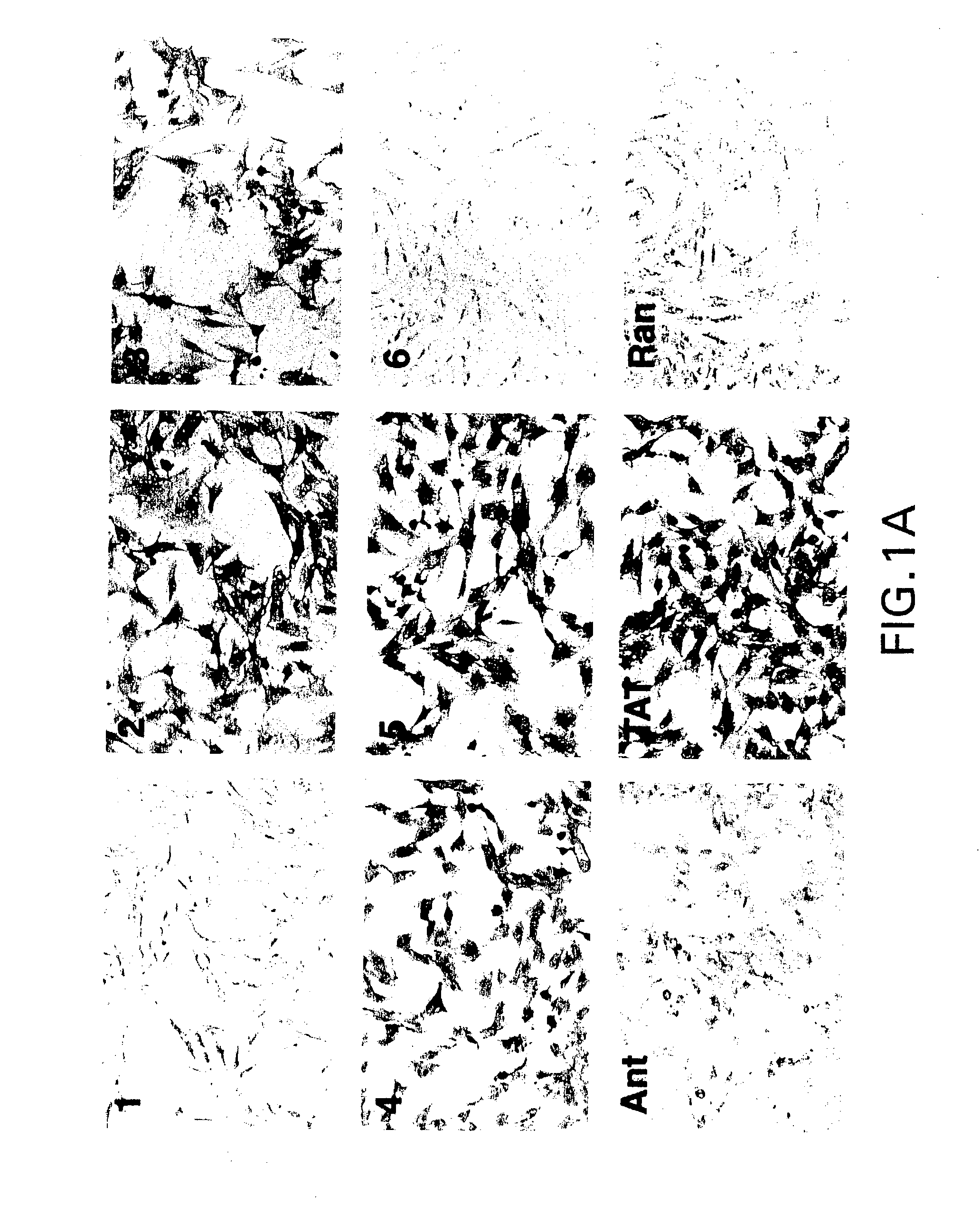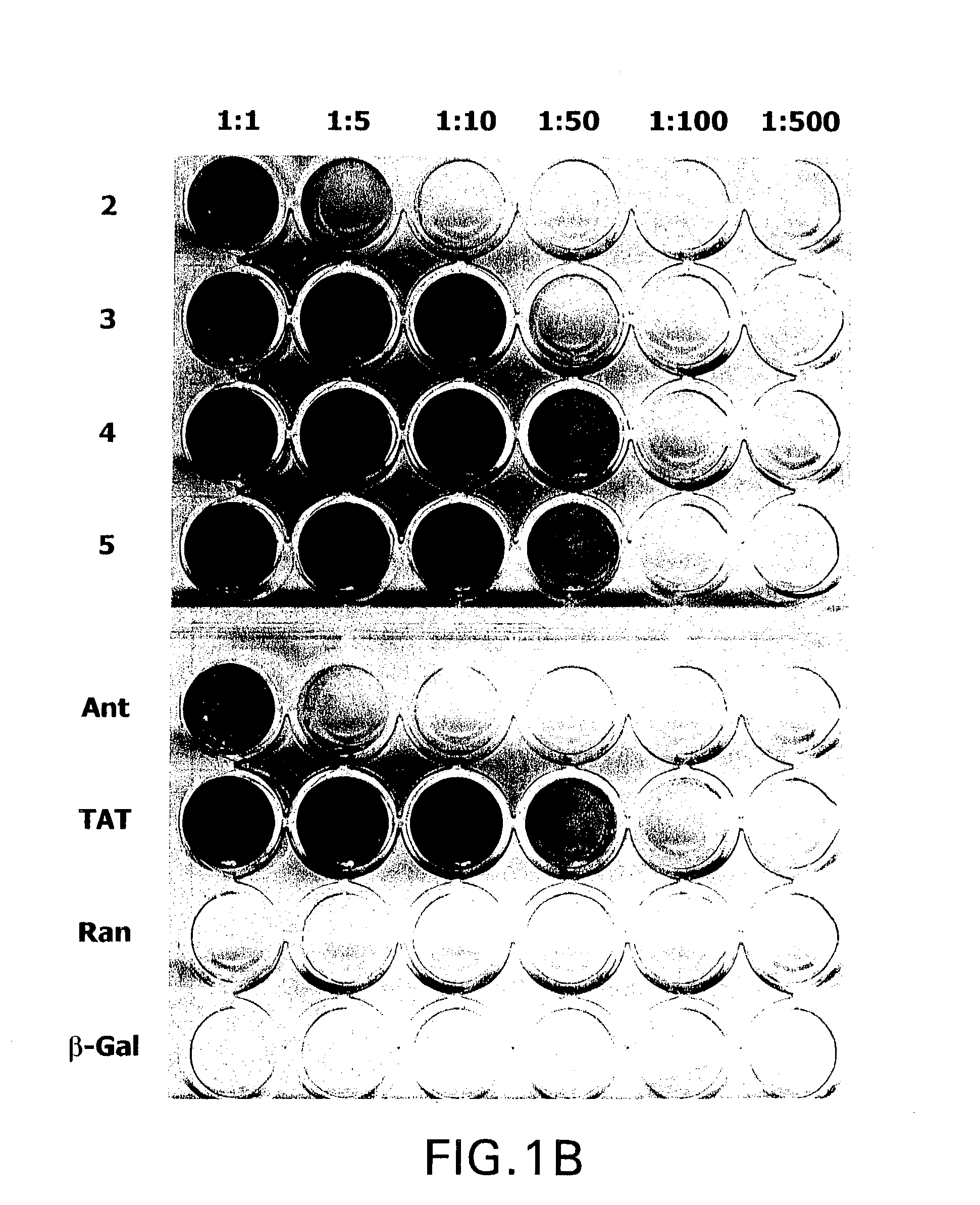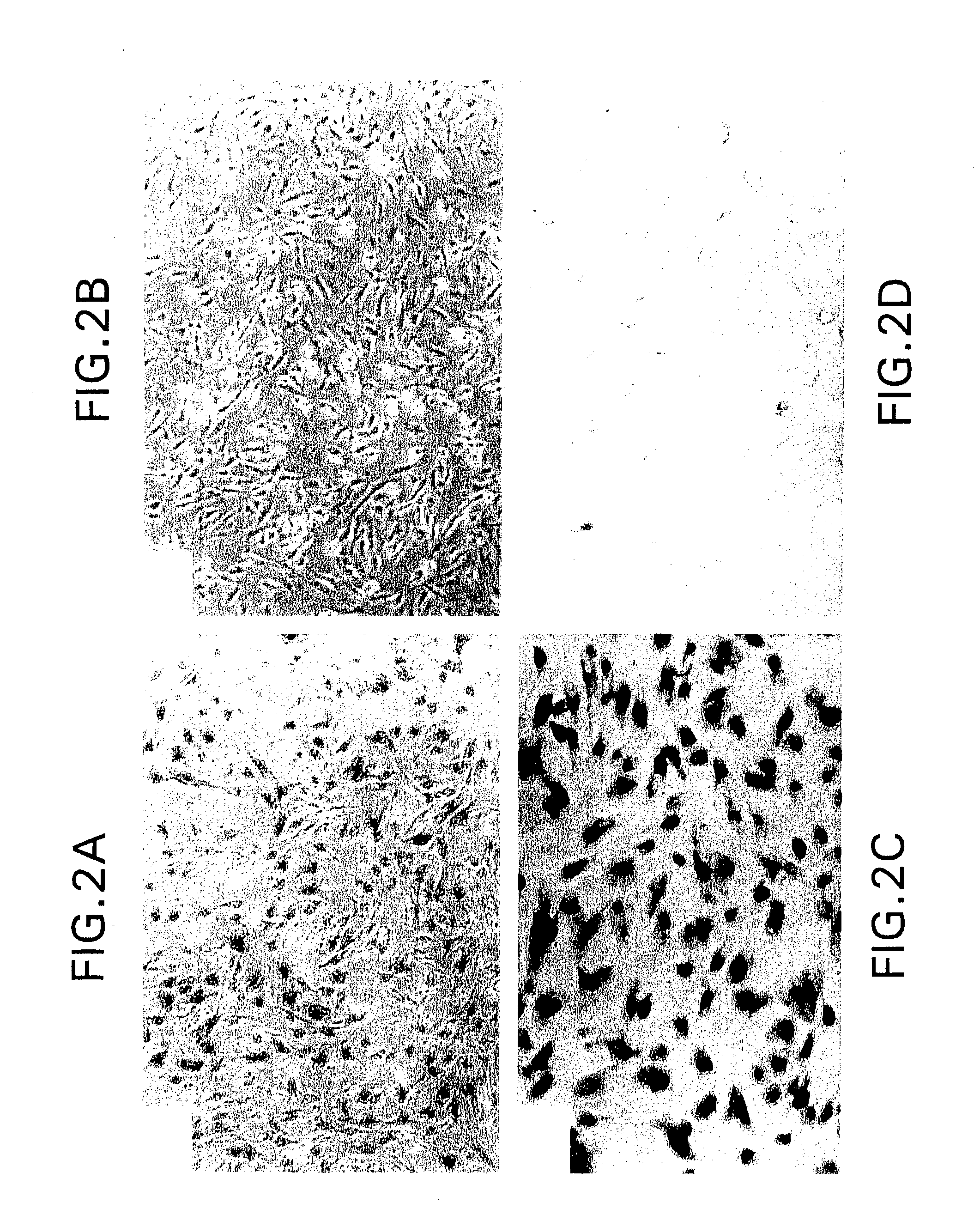Identification of peptides that facilitate uptake and cytoplasmic and/or nuclear transport of proteins, DNA and viruses
a technology of peptides and peptides, which is applied in the field of identification of peptides that facilitate uptake and cytoplasmic and/or nuclear transport of proteins, dna and viruses, and can solve the problems of inability to efficiently release dna into the cytoplasm, potential risks and limitations of the use of viral vectors for the delivery of cargo, and limited methods
- Summary
- Abstract
- Description
- Claims
- Application Information
AI Technical Summary
Problems solved by technology
Method used
Image
Examples
example 1
Titering M13 Phage
[0197] A phage display library (Ph.D.-12.TM. Catalog #8110) was obtained from New England BioLabs (Beverly, Mass.). The Ph.D.-12.TM. phage display library is a library of M13 coliphage with each phage displaying a different 12 residue peptide and represents 1.9.times.10 independent clones. The randomized peptides in the library are expressed between the leader sequence and the N-terminus of the minor coat protein pIII, resulting in an average valency of 5 displayed peptides per virion. The display vector for the library is a derivative of wild-type M13 phage which is not a lytic phage. There is a physical linkage between each displayed peptide and its encoding DNA for easy determination of the selected peptide sequence.
[0198] E. coli ER2537 was the host strain used for the M13 phage display library. ER2537 is a robust F+strain with a rapid growth rate and is well suited for M13 propagation.
[0199] For titering the phage, ER2537 was streaked out from a glycerol stock...
example 2
Screening a Phage Display Library to Identify Internalizing Peptides
[0200] Hig-82 biopanning: Hig-82 cells (rabbit synovial cell line supplied by Christopher Evans, University of Pittsburgh, ATCC Deposit No. CRL-1832) were employed for screening the New England Biolabs Ph.D-12.TM. phage-display library. The Hig-82 cells were cultured in 10 cm plates and grown to 100% confluency. The cells were then incubated with approximately 4.times.10.sup.10 phage in a volume of 10 .mu.l overnight at 4.degree. C. The Hig-82 cells were then harvested and washed twenty times with wash buffer (25 mM Tris-HCL pH 7.4, 150 mM NaCl, 1 mM CaCl.sub.2, 10 mM MgCl.sub.2, 1% bovine serum albumin (BSA)). The last washing solution was collected and titered to determine if any phage were present. This wash had no phage indicating that the washing was sufficient. Phage which were bound to the cells were eluted with 50 mM glycine, pH 2.2 for 30 minutes at room temperature and the eluate was immediately thereafter...
example 3
Identification of Phage Displayed Peptides Which were Internalized into Hig-82 Cells T-Cells, Calu3 Cells, and Cervical Tissue
[0212] After three rounds of biopanning, the enriched phage preparations were plaqued as described above in Example 1 for phage titering. A single plaque was then picked (from plated containing approximately 100 plaques) with a sterile wooden stick and transferred to a tube containing 1 ml of ER2537 culture in LB and incubated for 4.5 hours with shaking. The phage were amplified as described above in Example 2. Phage DNA was prepared from the amplified stock by centrifuging the 1 ml cultures in a microcentrifuge for 30 seconds, removing the supernatant, adding 200 .mu.l PEG / NaCl and precipitating the phage for 10 minutes at room temperature. The precipitated phage were then centrifuged for 10 minutes in a microcentrifuge and the supernatant was discarded (a subsequent spin was performed to remove any remaining supernatant). The pellet was resuspended in 100 ....
PUM
| Property | Measurement | Unit |
|---|---|---|
| volume | aaaaa | aaaaa |
| pH | aaaaa | aaaaa |
| pH | aaaaa | aaaaa |
Abstract
Description
Claims
Application Information
 Login to View More
Login to View More - R&D
- Intellectual Property
- Life Sciences
- Materials
- Tech Scout
- Unparalleled Data Quality
- Higher Quality Content
- 60% Fewer Hallucinations
Browse by: Latest US Patents, China's latest patents, Technical Efficacy Thesaurus, Application Domain, Technology Topic, Popular Technical Reports.
© 2025 PatSnap. All rights reserved.Legal|Privacy policy|Modern Slavery Act Transparency Statement|Sitemap|About US| Contact US: help@patsnap.com



